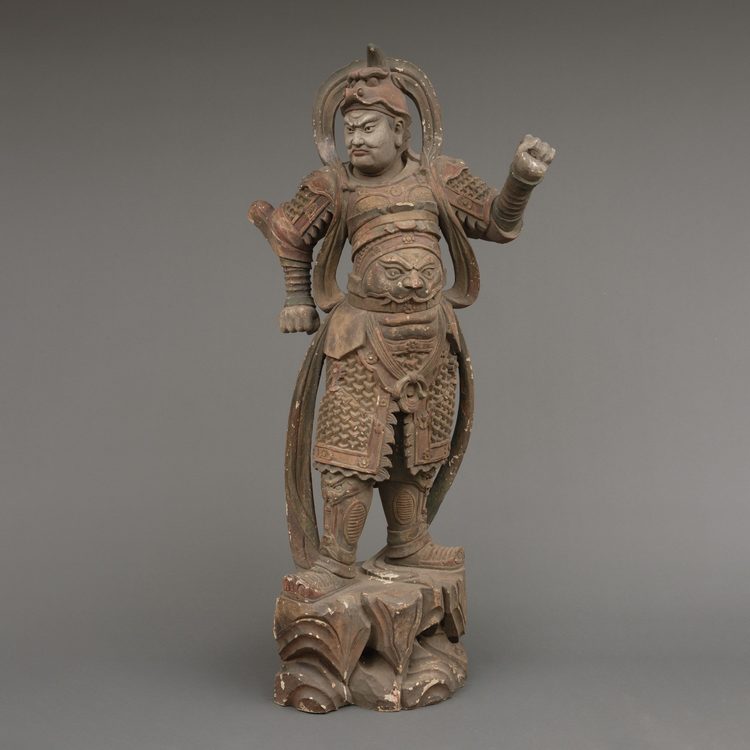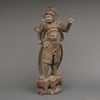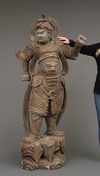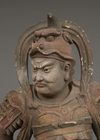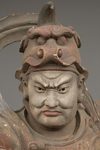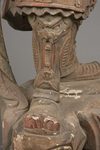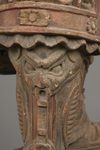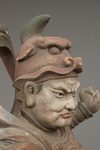A JAPANESE LIFE-SIZE NIO WOODEN STATUE, 1868-1912 (MEIJI PERIOD)
A life-size wooden statue (height 172 cm) of a Buddhist deity in his manifestation of a warrior, clad in armour and standing on a rock. The eyes of this impressive statue have glass eye pupils. And a terrifying head of a monster figure sculpted on his belly, as an extra protection against unfriendly identities towards Buddism. The deity is one of a group of 8 devas (“ten”), deities assimilated from Indian Brahmanism and Hinduism into Buddhism. A god in a suit-of-armour is one of the gohoshin, a “deva” that guards the buddhas and extend their protection to the followers of Buddhism. There are various groups of so called “ten”. This “ten” is Gobujo, one of the Eight Legions (hachibushu). This group of eight deva (each representing his own tribe or legion) protect Shaka nyorai, the historical buddha Gautama as the nyorai-buddha Shakyamuni (Shaka). In a temple the hachibushu statues are placed around a central Shaka nyorai figure. Characteristic for Gobujo is the elephant head he wears on his head.
Height:172 cm. Width: 62 cm. Dept: 42 cm.
